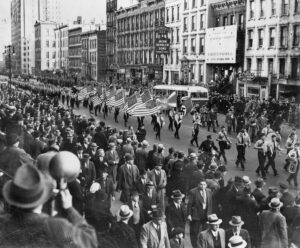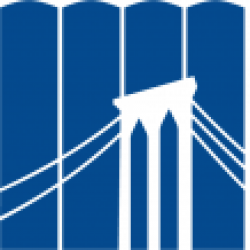Today, January 27, is Holocaust Remembrance Day. It was on this date in 1945 that the Soviet Army liberated the Auschwitz concentration camp.
Americans and the Holocaust Exhibition
This coming November a very special exhibit entitled “Americans and the Holocaust” is coming to New York City College of Technology. The 1100 square foot installation, part of an initiative sponsored by the American Library Association (ALA) and United States Holocaust Memorial (USHMM), explores what Americans knew about rising authoritarianism in the 1920s and 1930s and asks what public officials and citizens did and failed to do in the lead-up to the annihilation of six million Jews, Roma, homosexuals, and others during the Second World War. City Tech is one of fifty institutions across the United States to be hosting the exhibit over the course of its run, and the only host institution in either New York State or New Jersey. “Americans and the Holocaust” will be free and open to the public. Accompanying the exhibit will be programming discussing its themes with noted scholars.
Rising Fascism and Americans Response
Americans in the 1930s were consumed with rising unemployment and homelessness after the onset of the Great Depression. People were also increasingly isolationist in this time just fifteen-twenty years after the Great War. Millions had been killed in the global conflict of 1914-1918. The Great Influenza Pandemic of 1918 consumed the lives of tens of millions more as the virus spread around the world.

Americans were slow to respond when figures such as Mussolini and Hitler rose in the 1920s and 1930s. After Hitler became German Chancellor in 1933 and began his persecution of Europeans, most Americans advocated to keep America’s borders closed to immigrants and refugees. Aviator Charles Lindbergh and others began the noninterventionist America First movement as tension rose in Europe. The Germans used such events as the 1936 Winter and Summer Olympics in acts of so-called “sportswashing”—a technique in which political figures use major sporting events to soften their image and deflect criticism of their administration—to propagandize. Nearly one million Americans joined the 400 America First chapters across the country. The German American Bund, an organization supporting Hitler and his National Socialist Party, packed New York’s Madison Square Garden with 20,000 American supporters on February 20, 1939.
Using the Exhibition in Fall 2023 Courses and Beyond
“Americans and the Holocaust” is aimed at a general audience and poses big questions. Among other things, it asks viewers to consider what Americans knew about the war and the Holocaust while they were going, and what the nation might have done differently. The exhibit is ideal for college students. The Ursula C. Schwerin Library will also be curating a number of books and other materials which will be available for loan. We strongly recommend viewers watch “The U.S. and the Holocaust,” a 6 1/2 hour documentary based on the exhibit and created by Ken Burns, Lynn Novick, and Sarah Botstein that debuted on PBS in September 2022.
While “Americans and the Holocaust” is on display, we encourage faculty to consider incorporating the exhibit in their lesson plans in the Fall 2023 semester. Its themes cut across various disciplines and would be ideal for courses in History, Literature, Law & Paralegal, and Human Services just to name a few. This spring semester the organizing committee in the library will be speaking at events sponsored by the Faculty Commons and other venues to discuss how faculty and their students can engage with “Americans and the Holocaust.”
by Keith Muchowski on behalf of the “Americans and the Holocaust” exhibition organizing committee



